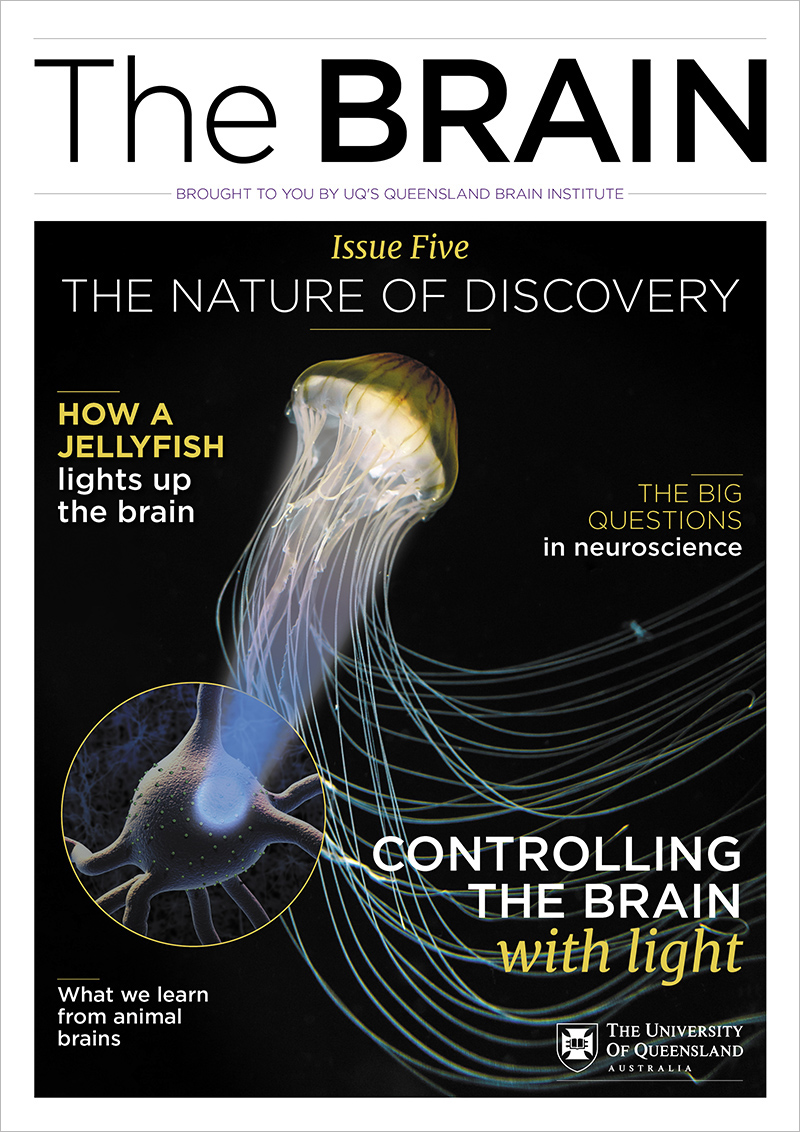Though humans are most genetically similar to primates, with 98 per cent of the same genes, we nevertheless share many of our genes with the simplest of organisms—about 61 per cent with fruit flies, for example. Despite differences in size and complexity between the human brain and smaller animal brains, the similarities mean that much can be learned from studying these simpler models.
We can better understand sensory processing, such as how animals see colour and make sense of visual information; we can learn how animals navigate their environment, including through flight; and by looking at how animals sleep, we can learn more about our own sleep behaviours. All of these animal models and behaviours give us important insights into understanding the human brain.
As with all discoveries, animal research can also be a source of inspiration for developments in new technology. Take, for instance, the ability of the mantis shrimp to see polarised light, which humans cannot detect without special glasses. Scientists are now working on an underwater navigation technique using this process. Likewise, understanding how birds fly in flocks without colliding can help us fly groups of drones or develop better crash-avoidance systems for aircraft.
Flight: learning from nature's best
A honeybee can return home quickly and precisely after flying several kilometres from its hive to find food. A budgie can fly rapidly through a dense thicket, avoiding all the branches. How do these tiny-brained creatures navigate so well? How do they avoid collisions? These are just some of questions that Emeritus Professor Srini Srinivasan from UQ’s Queensland Brain Institute has been trying to answer.
His team has uncovered how bees are able to fly safely through narrow passages, regulate their flight speed, gauge how far they have flown, and orchestrate smooth, safe landings. More recently, their research has shown how bees flying in swarms can make coordinated turns to move safely in busy air spaces and avoid collisions with each other.
“Bees are very smart,” says Emeritus Professor Srinivasan. “They can learn colours, shapes and smells, detect camouflaged objects, and even fly through complex mazes.”
His team also studies how flying creatures avoid obstacles. Their research has revealed that budgies are very body aware: while flying through a narrow space, they close their wings in advance, but only when the space is narrower than their wingspan. They also found that budgies flying head-on toward each other avoid collisions by using a simple rule: each bird veers to its right. This strategy, which birds evolved millions of years ago, has also been adopted by aircraft pilots to avoid collisions.
Combining biology, neuroscience and engineering, Emeritus Professor Srinivasan’s team has designed new vision systems to guide the flight of autonomous aircraft like drones, so they can avoid collisions with other aircraft or obstacles in their environment.
“We are gaining new knowledge about how small animals with relatively simple nervous systems have evolved elegant strategies for guidance and navigation, and are incorporating the findings into new technology,” he says.
Flies sleep like babies
Any animal with a brain sleeps. Some sleep more than others, but surprisingly, the amount of sleep they need is not related to their body size or brain size. Fruit flies, for instance, have sleep patterns that are remarkably similar to humans—they sleep mostly at night for about 8 to 10 hours, have a midday siesta, sleep more when they are young, and sleep in stages of varying intensity, such as deeper and lighter sleep, just as humans do. Furthermore, fruit fly sleep is affected by the same stimulants and sedatives that work on humans, and if the flies are sleep deprived, they sleep longer and more deeply to catch up.
Associate Professor Bruno van Swinderen's team at UQ's Queensland Brain Institute are studying fruit flies to further understand which genes are important for regulating sleep, why we sleep, what triggers sleep, and what causes sleep disorders. They are also investigating the roles that different stages of sleep have in how the brain functions. These insights may also help us understand the mechanisms that support consciousness.


